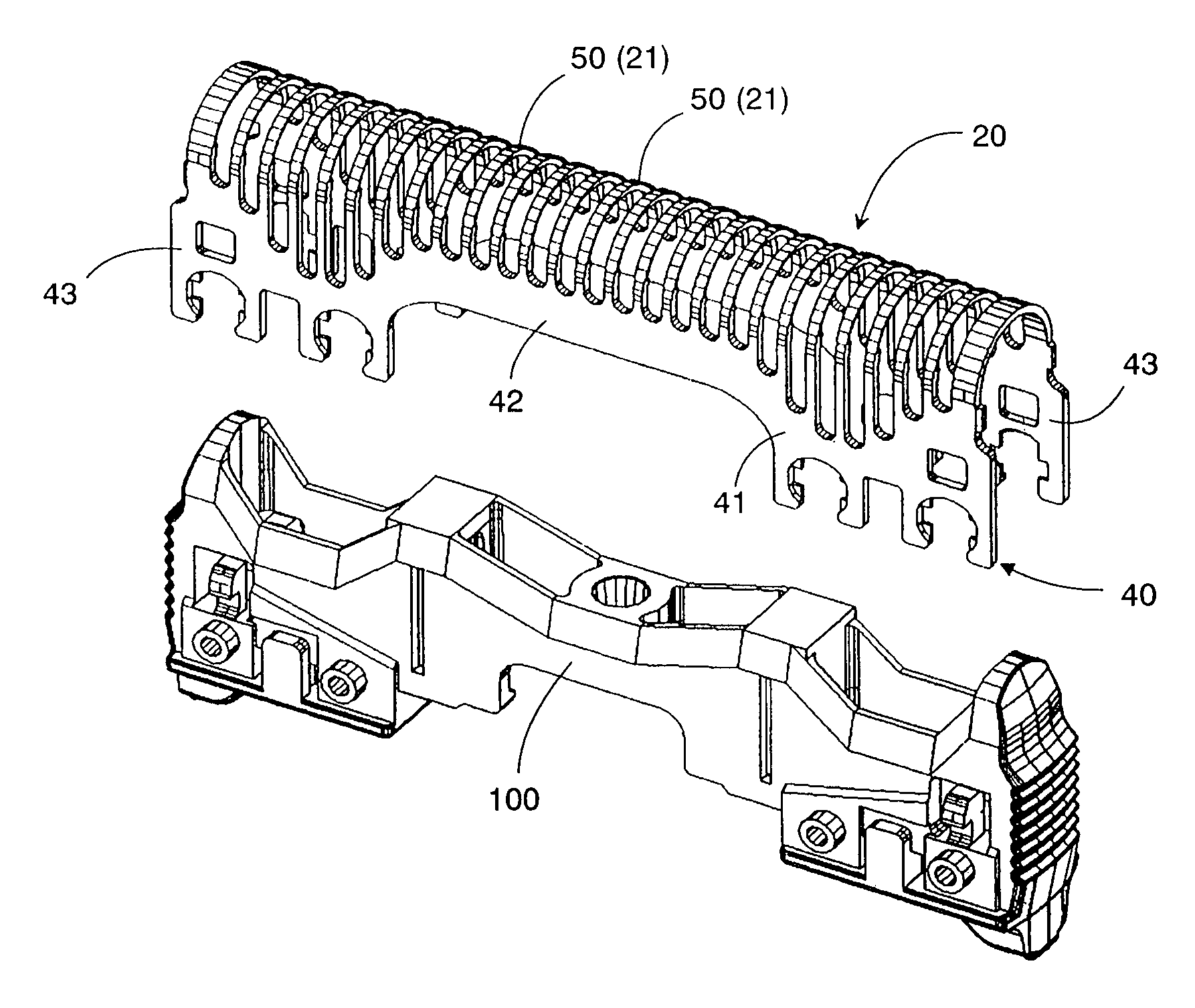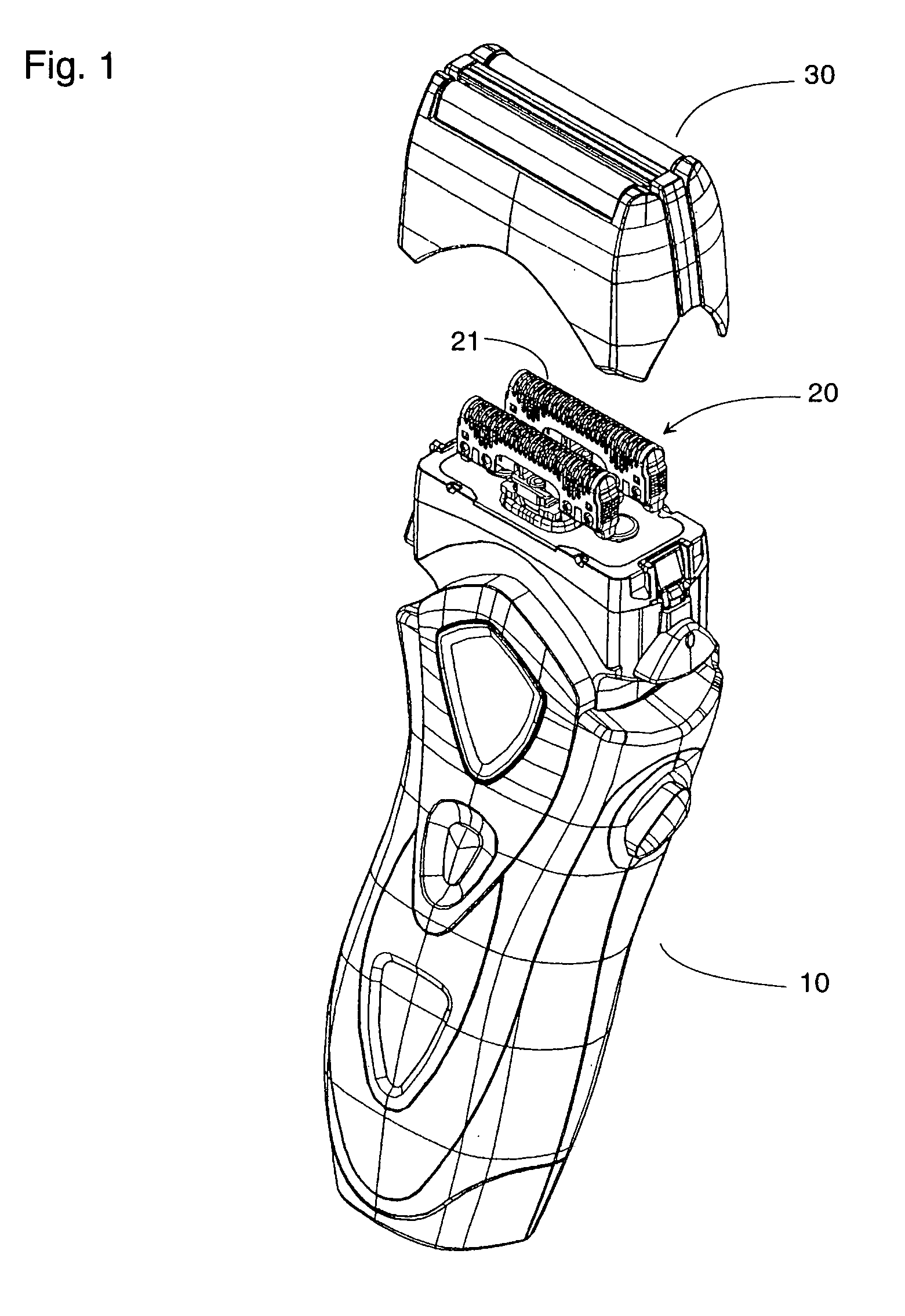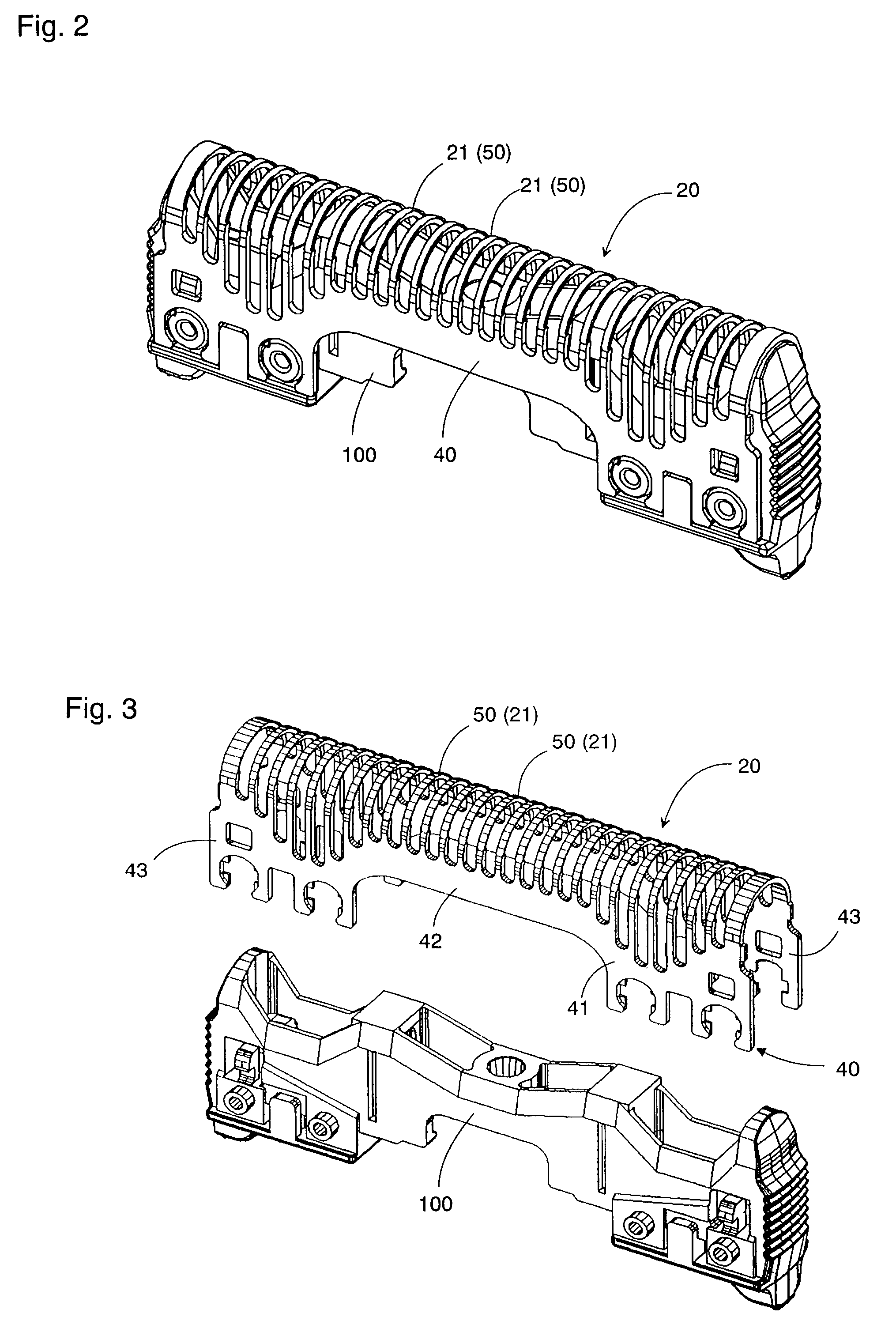Method of manufacturing inner blade for electric razor
a technology of inner cutter and dry shaver, which is applied in the direction of manufacturing tools, furnaces, heat treatment equipment, etc., can solve the problems of reducing the cutting efficiency of the whole inner cutter, wasting material, and limited number of blades per unit length of metal plates, so as to reduce waste of material, reduce waste, and increase yield
- Summary
- Abstract
- Description
- Claims
- Application Information
AI Technical Summary
Benefits of technology
Problems solved by technology
Method used
Image
Examples
Embodiment Construction
[0035]Referring now to FIGS. 1 to 3, there is shown a dry shaver with an inner cutter 20 which is fabricated in accordance with the present invention. The inner cutter 20 has a plurality of parallel blades 21 for shearing engagement with a complementary outer cutter or foil 30 having a number of perforations responsible for introducing hairs. The inner cutter 20 is connected to a driving source incorporated in a shaver housing 10 and is driven thereby to oscillate relative to the outer cutter 30 for shearing the hairs.
[0036]As shown in FIGS. 2 and 3, the inner cutter 20 is formed from a single metal plate 40 to have a plurality of generally U-shaped blades 21 which are parallel to each other and are supported by a common frame 41. The frame 41 is secured to a joint 100 which is molded from a plastic material for connection with the driving source. The metal plate 40 is made from a martensite stainless steel into a generally rectangular configuration having a thickness of at least 0....
PUM
| Property | Measurement | Unit |
|---|---|---|
| Thickness | aaaaa | aaaaa |
| Length | aaaaa | aaaaa |
| Angle | aaaaa | aaaaa |
Abstract
Description
Claims
Application Information
 Login to View More
Login to View More - R&D
- Intellectual Property
- Life Sciences
- Materials
- Tech Scout
- Unparalleled Data Quality
- Higher Quality Content
- 60% Fewer Hallucinations
Browse by: Latest US Patents, China's latest patents, Technical Efficacy Thesaurus, Application Domain, Technology Topic, Popular Technical Reports.
© 2025 PatSnap. All rights reserved.Legal|Privacy policy|Modern Slavery Act Transparency Statement|Sitemap|About US| Contact US: help@patsnap.com



